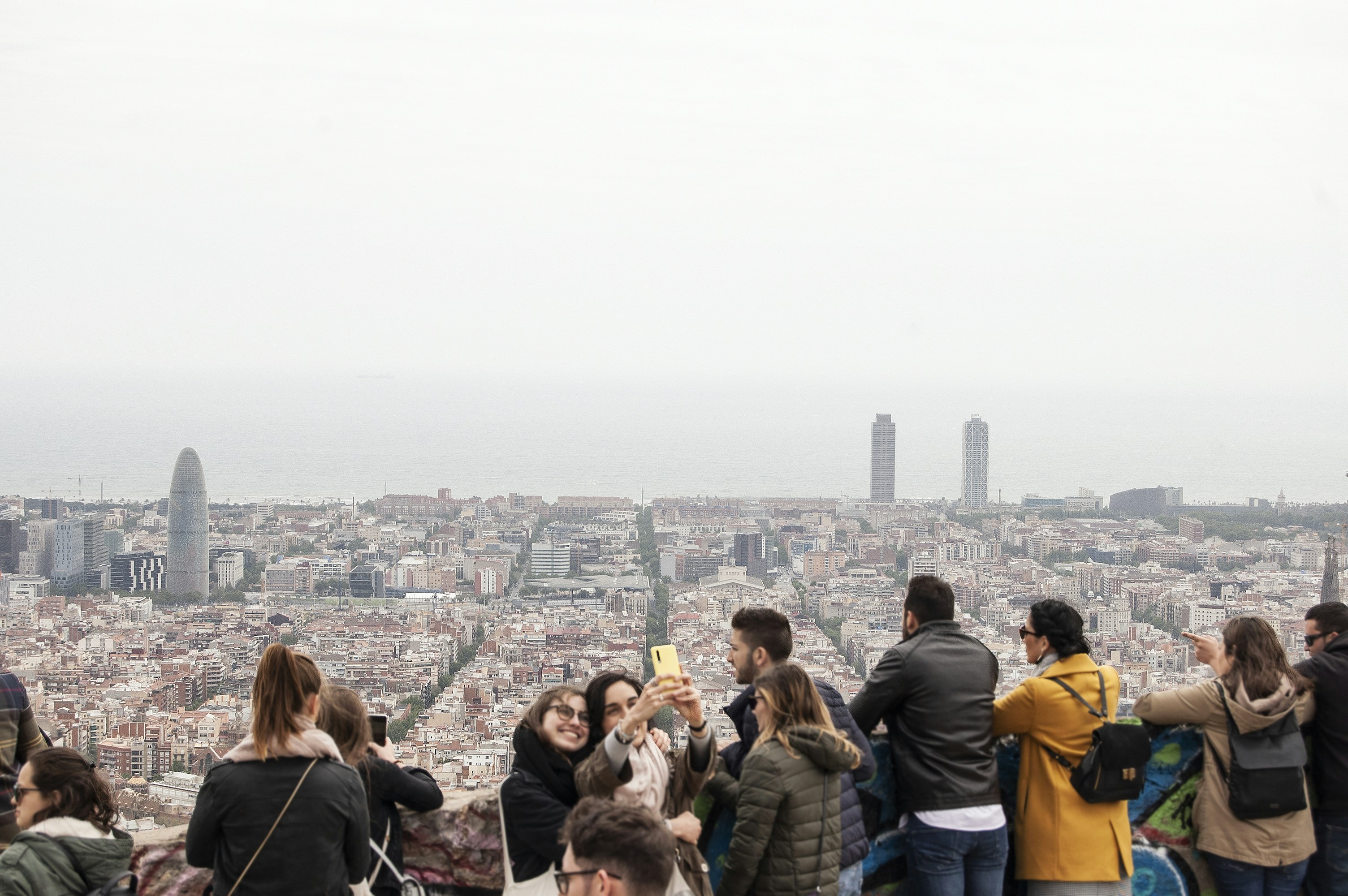Home invasions and no solution for the residents of Barcelona’s most crowded viewpoint: "The Urban Guard does not appear"

The main symbol of Barcelona’s tourist overcrowding, the viewpoint of the bunkers of the Carmel, the problems that cause nuisance to the neighbors remain unsolved. Three months after the end of the works on the fence of the bunkers and the closing of the site at night, the problems in the area are far from being solved. Night parties are no longer held, but the Turó de la Rovira Neighborhood Council, one of the neighborhood associations in the area, complains that “hundreds of visitors” accumulate around the perimeter of the fence after closing at 7:30 p.m. . When the Urban Guard throws them out “they keep consuming alcohol on the side that goes from Calle Labèrnia to the water reservoir, dispersing all over the slope of the mountain until they reach almost the houses at the end of Calle Mühlberg”. This Monday they captured that scene an hour after closing time and published it on social networks as they have done on other occasions.
The Neighborhood Council warns that the main crowds occur “before the Mühlberg bridge” and the viewpoint “at the end of the stairs that go up Calle Tenerife”. Fran Bernal, a resident of the area and a member of the association, attributes the situation to the widespread tourist overcrowding of the city: “If they continue to bring tourists, they continue to bring all the icons of the city”. Bernal also questions the effectiveness of the search and assures that visitors now go through private homes to avoid it. “Before people didn’t skip home to go to the anti-aircraft battery, now they do.” In fact, they report that last week “a group of drunk tourists” again tried to access the home of the 76-year-old neighbor who was assaulted and robbed two months ago. The inhabitants of these streets have had to install “padlocks” and “precarious bars” to prevent them from entering. The majority criticism among the neighbors is that “the Urban Guard does not appear” after the closure.
The infrastructure of the fence, with a cost of 1.6 million euros, is composed of steel fences two meters high and has seven access points. The Consistory has built it before the large influx of visitors to avoid the night parties and the degradation of archaeological remains that have been denounced by the residents of streets like Gran Vista or Maria Labernia in recent years. The Urban Guard will continue to monitor the surroundings of the viewpoint and the accesses by vehicle in several streets until October according to sources in the Horta-Guinardó district, which has implemented the usual device to control the influx of summer tourists since May.
Sources from the City Council have already indicated to this newspaper that the priority of the agents is to evict this area “so characteristically orographically”, even though they consume alcohol in public: “If they have to start reporting all the people who are consuming alcohol, they can produce unwanted situations. Any police action is based on the basic principles of opportunity, congruence and proportionality”.
The Council also criticizes that the traffic bollards that prevent access to vehicles that do not reside on Panorama and Turo de la Rovira streets have been damaged “since the beginning of July”, which causes tourists to also enter by car.
Presence of asbestos Added to this situation is the presence of a “large amount of asbestos” that has been uncovered after the completion of the fencing works, according to a statement issued by the Council. They assure that neither the City Council nor the company to which the project was awarded have collected it and that the “tourist crowd and the bottles” that continue to be celebrated there “are dispersing it all over the area”. This dispersion of visitors down the mountain causes the entire slope of the Mühlberg area to erode, causing “asbestos and stones to come down the mountain, to the houses”.
Council sources indicate that investments have been made in Turó de la Rovira with a value of 2,070,740.24 euros during the mandate 2019-2023. Of this total, 12% (almost 256,000 euros) has been allocated to the removal of the fiber cement, “an operation that includes annual inspections for the location and, if necessary, the removal of the material”. 220 kilos of this waste will be removed in November 2019, the City Council explains, while the rest of the years they will also remove fiber cement fragments “with possible asbestos content” at various points on the Hill such as Can Baró or Font of Fargues. “In the next few weeks, the district technicians will study again what measures to take to act on the affected area”, say municipal sources.
The Department of Education of the Generalitat approved in 2022 a package of 11 million euros to remove covers containing asbestos in 39 schools and institutes. The work to eliminate this toxic product is very expensive because it requires high protection equipment and specialized companies that have special accreditation. In addition, the waste must be transferred to a concrete landfill. Fiber cement is harmful when it breaks and releases fibers that are inhaled, although experts warn that this also happens when it degrades, three or four decades after its placement. The substance can cause pleural cancer and serious respiratory ailments.